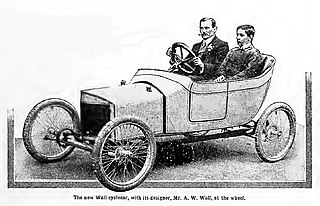Advert in The Light Car and Cyclecar, November 8, 1919, introducing T.B. :-
T.B. CyclecarAbridged specification:Chassis. - Patent tubular.
Springing. - Quarter elliptic at the front: cantilever at the rear.
Transmission. - Precision 10 h.p., or J.A.P. 8 h.p. : Amac carburetter, M.L.magneto. Clutch - leather to metal with clutch drive. Gearbox:2 speeds forward and a reverse. Bevel gears of Ubas steel.
Lubrication. - Best & Lloyd semi-automatic drip feed to engine : grease cups to all shackle pins
Body. - Sheet metal, well upholstered and very roomy.
Mudguards. - Large sized, rear one hinged.
Footboards. - Accommodating spare wheel and toolbox.
Wheels. - Wire type, fitted with discs, 650mm x 65mm, with 700mm x 80mm tyres; interchangeable, quickly detachable.
Steering. - Direct.
Brakes. - Countershaft and back wheel of detaching type.
Controls. - Bowden system for carburetter and ignition; footpedals for clutch and countershaft brake; hand levers for gear change and rear brake.
Starting. - Handle at front.
Capacity. - Three gallons of petrol and 3 quarts of oil.
Equipment. - Spare wheel, hood, screen, lamps and generator, tools, jack and pump.
(Wheelbase. - 4' 0" x 7' 6"; Overall size, 10' 6" x 5' 0")
(Petrol Consumption. - 50 miles per gallon)
(Tax. - As motor cycle and side-car (£4))
Price. - Ready for the road, £200.
Delivery. - Commencing January.
Sole Manufacturers and Patentees :-Thompson Bros. (Bilston), LTD.Aircraft Dept., Bilston.















